Date: 4-9.2.2022
Team: Tomáš Dino Holer, Antonín Fiala, Jan Machek, Tomáš Sikora
During the coronavirus, the prices of some flights dropped significantly, so together with a few friends from a group of caudata breeders, we decided to go on a trip to observe and photograph Italian tailed amphibians in their natural habitat. The main target was two species of bizarre salamanders of the genus Salamandrina. This genus occurs throughout the Apennine Peninsula. The larger northern part is inhabited by the species Salamandrina perspicillata and the smaller southern territory, approximately from Naples to the south by S. terdigitata.
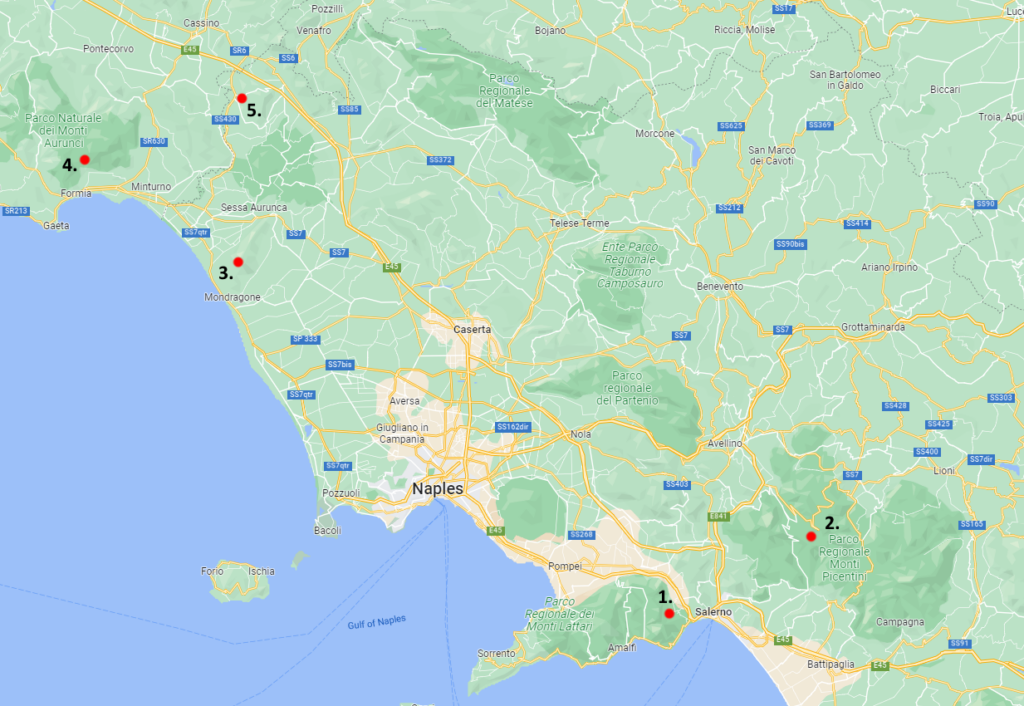
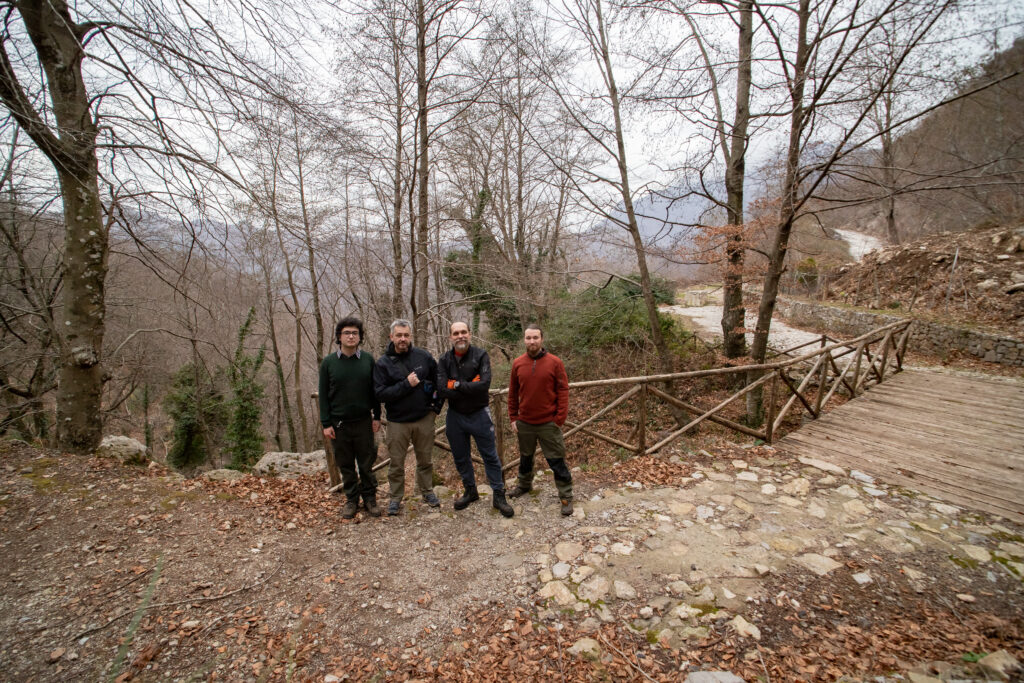
Let do Neapoli s ekonomickou aerolinkou Ryanair byl celkem příjemný a trval necelé 2h. Z letiště jsme se zdarma mikrobusem přepravili k nedaleké autopůjčovně, kde na nás čekal rezervovaný Opel Grandland X. Jen co jsme vyjeli z parkoviště autopůjčovny, přesvědčili jsme se o svérázném způsobu řízení Italských řidičů. Ve zkratce, dvojitá plná čára není překážka, červená je jen barva, ta silnice je dost široká pro dvě auta v jednom pruhu a přednost má ten odvážnější. To vše se samozřejmě projevovalo na stavu karoserií automobilů, včetně toho našeho a je jen zásluha našeho skvělého řidiče Jana a částečně i štěstí, že jsme na auto žádný “zářez” nepřidali. Cesta na ubytování v blízkosti města Salerno byla také dobrodružná. Nebyl tu sice takový provoz, ale uličky se stále zužovali. Nakonec jsme však po menších komplikacích a s pomocí majitele našli náš rezervovaný apartmán. Kromě nás zde bylo ubytováno je asi 15 kočičích hostů a bylo mi jasné, že v těsné blízkosti apartmánu toho moc živého nenajdeme. Ubytování bylo celkem pohodlné, ačkoli zde chyběla slibovaná kuchyň. Vyložili jsme kufry a hned vyrazili autem na nedalekou lokalitu, abychom si ji stačili prohlédnout ještě za světla. Čistý potok na dně hluboce zařízlého údolí je přesně tím pravým místem pro naše cílové druhy. První objev na sebe nenechal dlouho čekat. Byl jím endemický skokan italský (Rana italica). Od toho druhu jsme zde později našli kromě dospělců i vejce a pulce. Někteří dospělci byli ještě v amplexu. Vystoupali jsme údolím trochu výš a v malém přítoku jsme objevili první larvy mloka skvrnitého (Salamandra s. giglioli). Jak se postupně stmívalo, viděli jsme ve vodě stále více larev. Počasí nám příliš nepřálo, jelikož zde již několik dní nepršelo a zem tak byla poměrně suchá. I tak se nám ale k našemu překvapení podařilo nalézt tři dospělé jedince mloků. Poddruh giglioli se vyznačuje výrazným žlutým zbarvením. Kontrastní barva zaujímá výrazně větší plochu než je obvyklé u nominátního poddruhu. Dalším typickým znakem je přítomnost červeného zbarvení na hrdle a někdy i kolem žlutých skvrn na celém povrchu těla.
The flight to Naples with the economic airline Ryanair was quite pleasant and lasted less than 2 hours. From the airport, we took a free minibus to a nearby car rental company, where a reserved Opel Grandland X was waiting for us. As soon as we left the car rental car park, we were convinced of the peculiar way of driving of the Italian drivers. In short, a double solid line is not an obstacle, red is just a color, that road is wide enough for two cars in one lane, and the bolder takes precedence. Of course, all this was reflected in the condition of the car bodies, including ours, and it is only thanks to our great driver Jan and partly our luck, that we did not add any “notch” to the car. The trip to accommodation near Salerno was also adventurous. There was no such traffic, but the alleys were still narrowing. In the end, however, after minor complications and with the help of the owner, we found our booked apartment. In addition to us, there were about 15 cat guests and it was clear to me that in the immediate vicinity of the apartment, we will not find much of the goal wildlife. Accommodation was quite comfortable, although it lacked the promised kitchen. We unloaded our suitcases and immediately drove to a nearby location so that we could see it in the daylight. The clear stream at the bottom of a deeply cut valley is exactly the right place for our target species. The first discovery did not take long. It was an endemic Italian stream frog (Rana italica). In addition to adults, we later found eggs and tadpoles from this species. Some adults were still in the amplexus. We climbed the valley a little higher and in a small tributary we discovered the first larvae of the salamander (Salamandra s. giglioli). As it gradually got darker, we saw more and more larvae in the water. The weather was not very good for us, as it had not rained for several days and the ground was relatively dry. Even so, to our surprise, we managed to find three salamander adults. The subspecies giglioli is characterized by a distinct yellow coloration. The contrasting color occupies a significantly larger area than usual for the nominal subspecies. Another typical feature is the presence of red color on the throat and sometimes around yellow spots on the entire surface of the body.
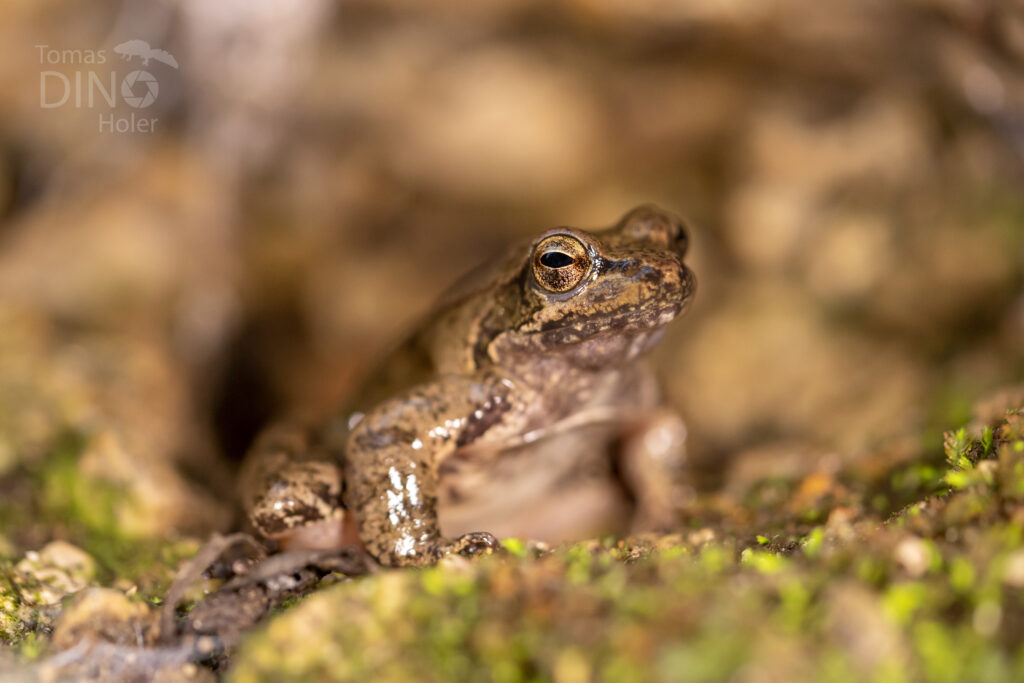

However, we searched in vain for the “salamandrinas”. So we decided to return to the car. On the way around the gurgling stream, we stopped at a rock alcove and than I saw it! On a rock about 50 cm above the ground, there was a tiny black silhouette with a white “panties” sign on the head. When we approached, we found that there is another piece next to it and we found a total of about 8 spectacled salamanders (Salamandrina terdigitata). We were surprised by their size, only 4 cm in the body. The goal of the expedition was thus partially met on the first day. The first finding also taught us how and where to look for active salamandrina individuals, which later proved to be very beneficial.
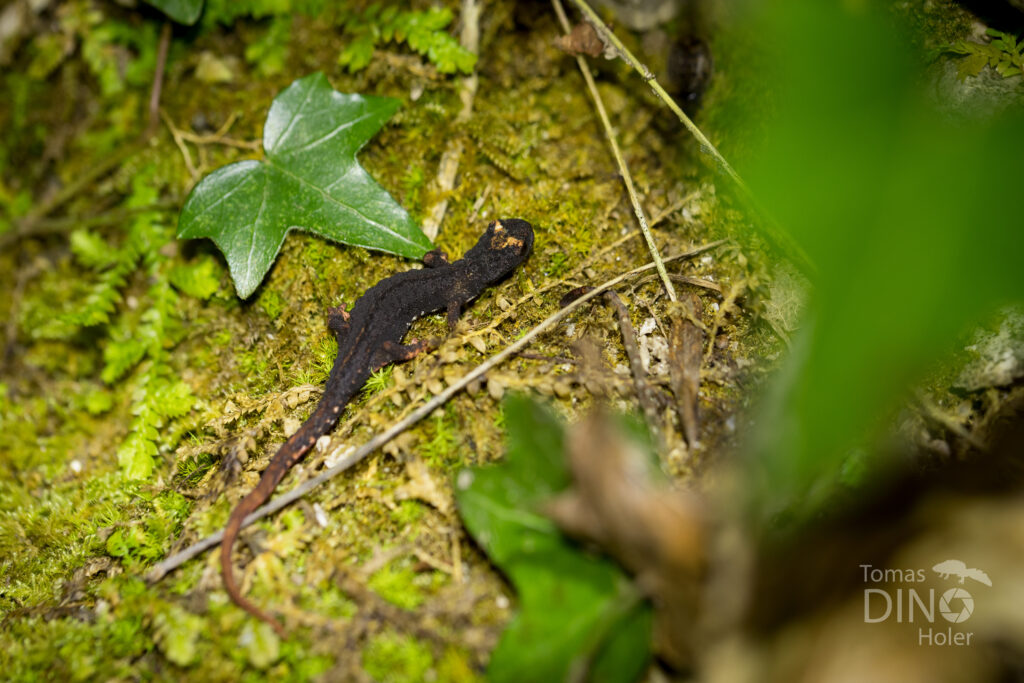
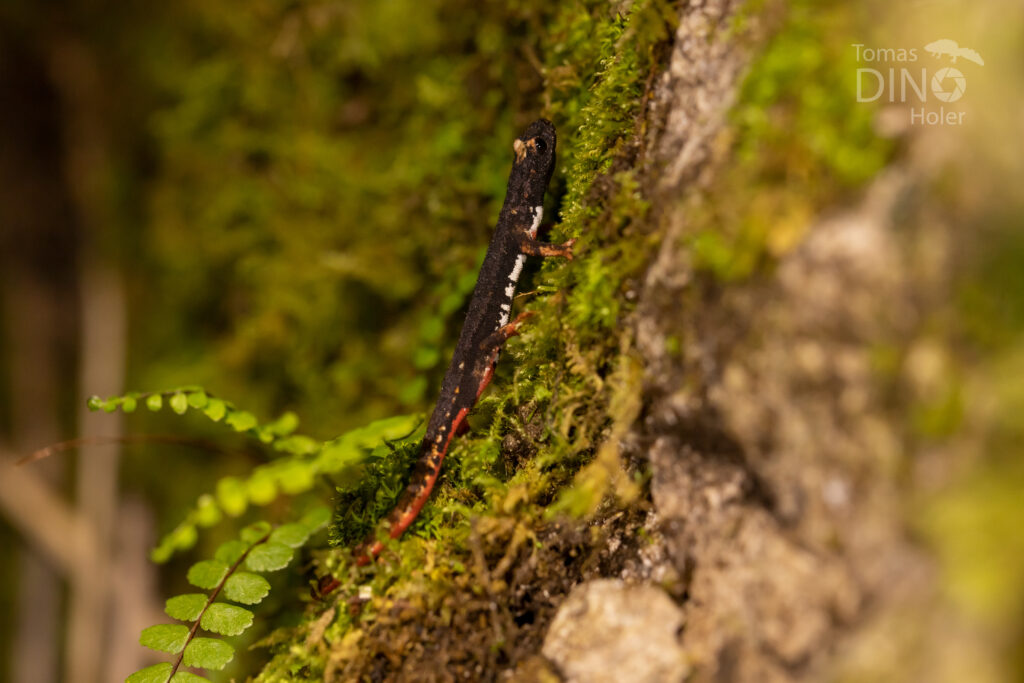
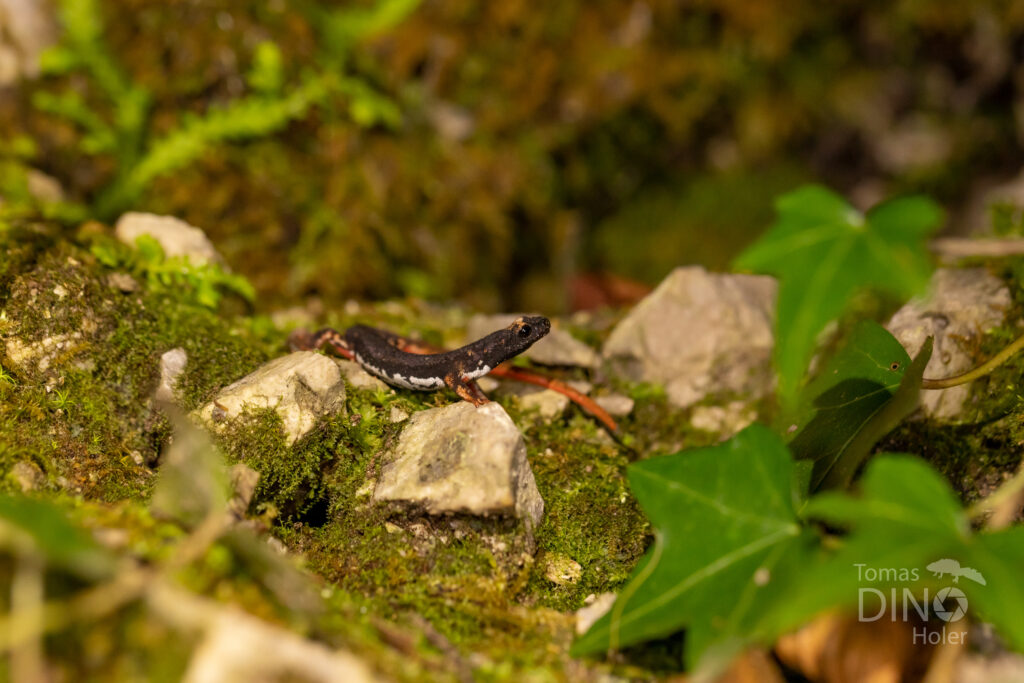
The next morning we went to the same location to have some photos in daylight. It was clear, the sun was shining, and the warm rays lured the Italian wall lizard (Podarcis siculus) and one wall gecko (Tarentola mauritanica) out of hiding. Even during the day, we wished good luck and we were able to take pictures of several salamanders.
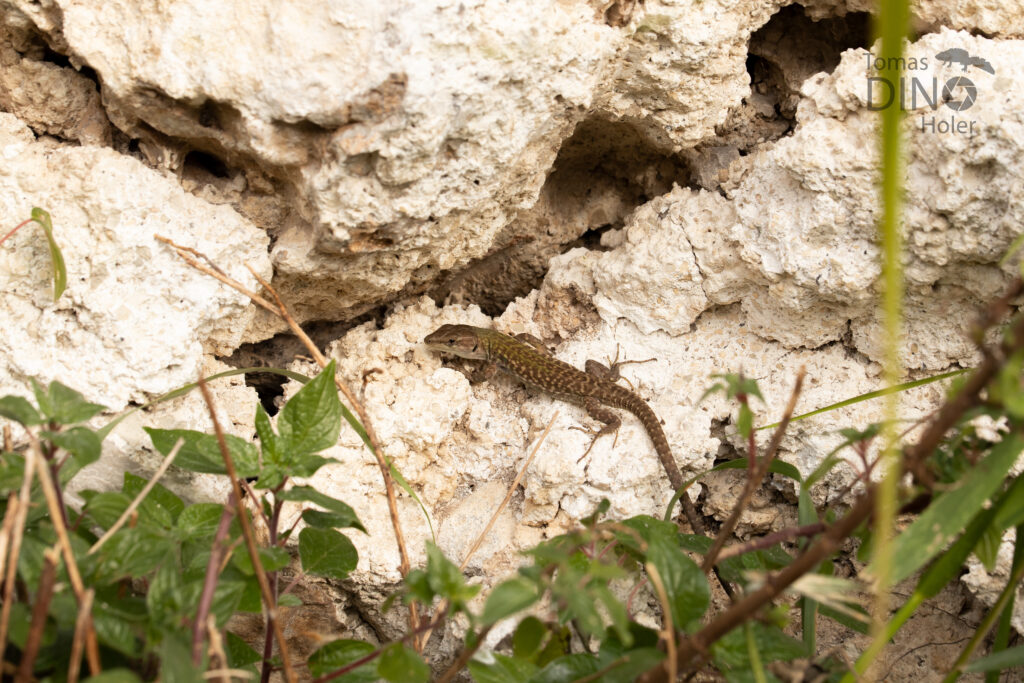

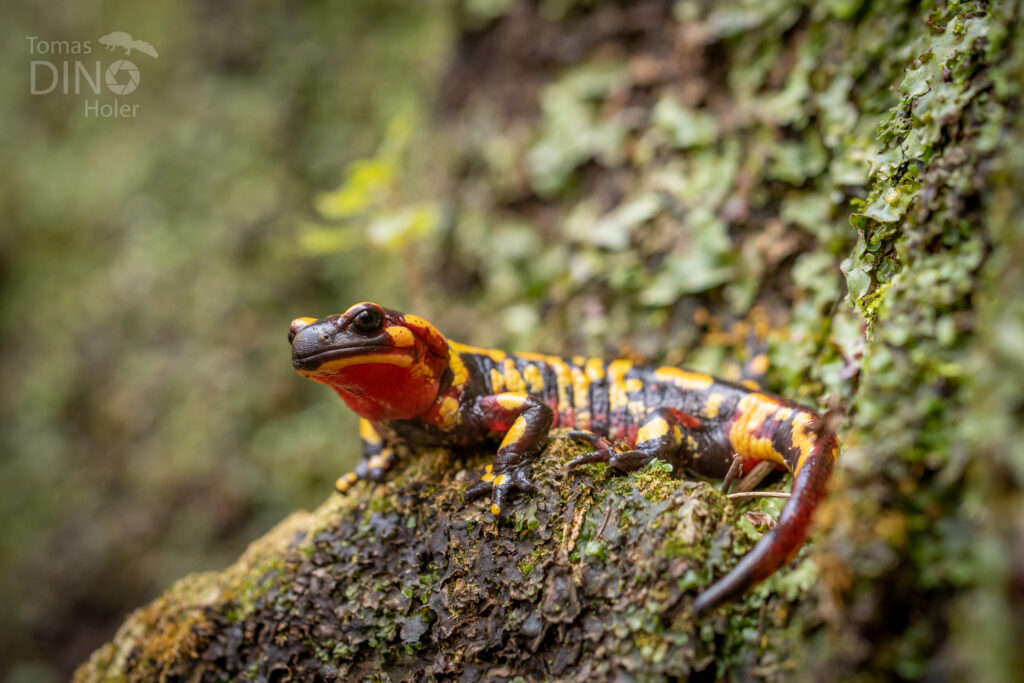
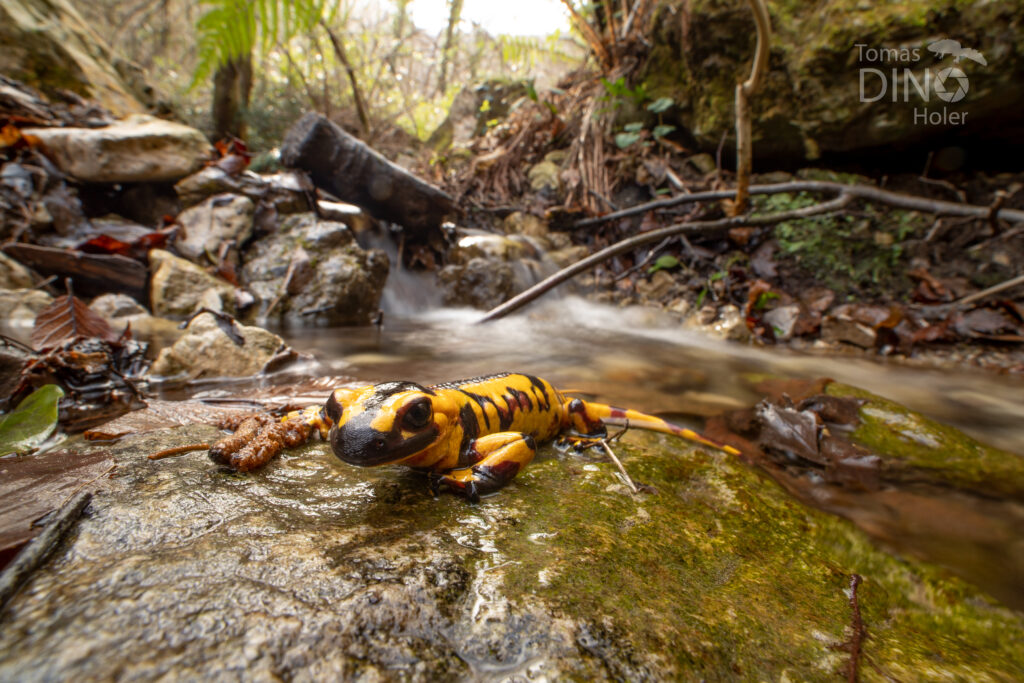
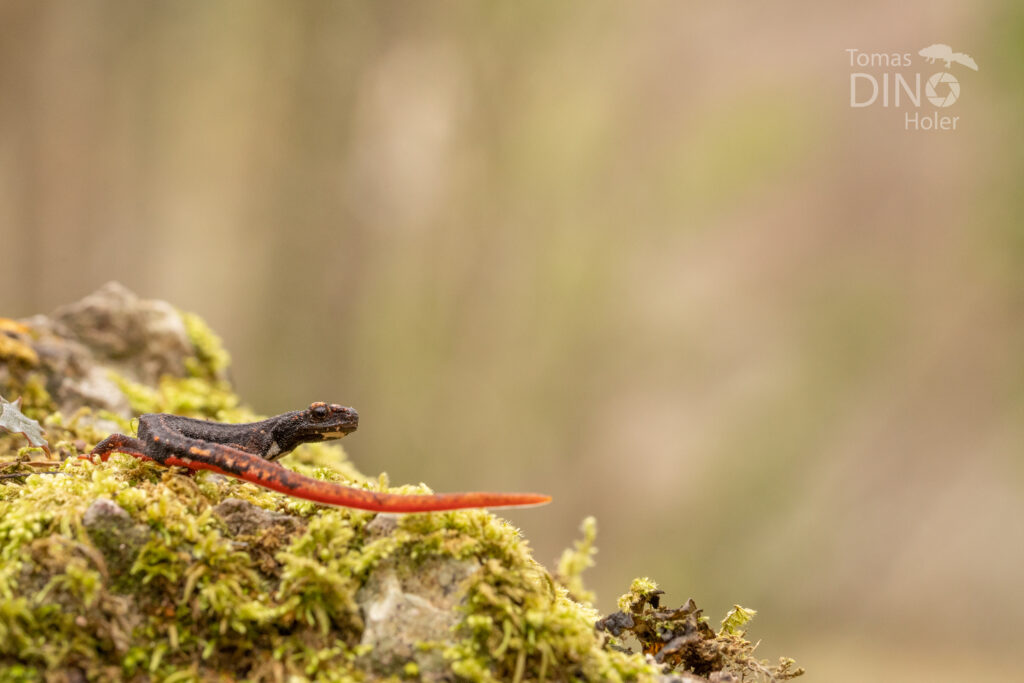
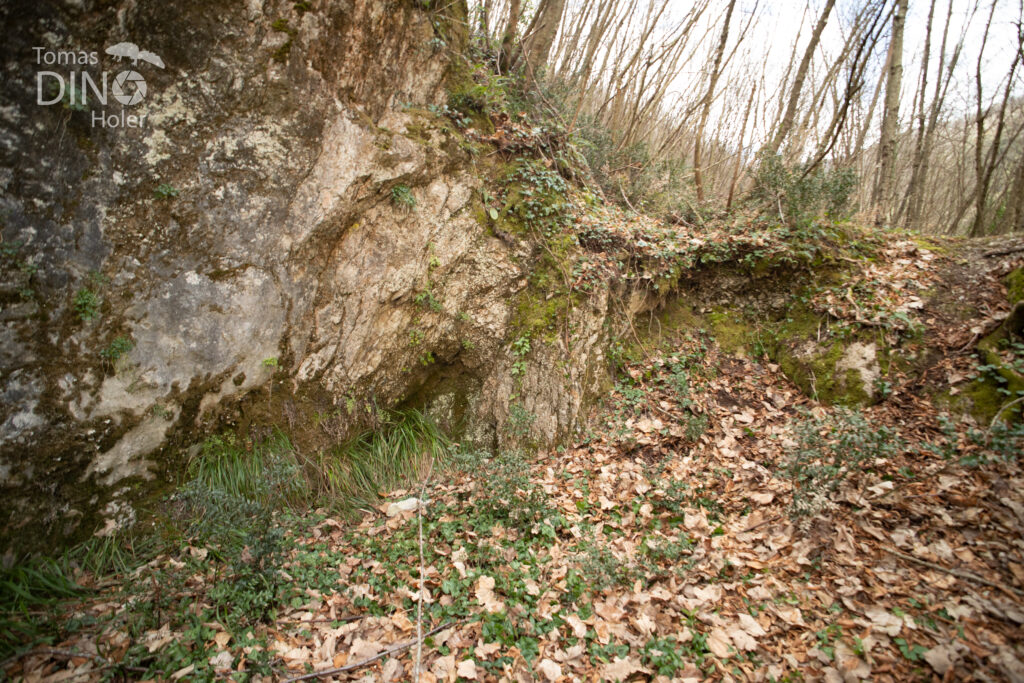
In the afternoon we went to the mountains according to plan. The Monti Picentini Mountains are famous for the occurrence of salamanders with very variable colors, including almost completely yellow individuals. At first we found several salamandrinas – already experienced the day before. Several fire salamanders later appeared, including very young individuals. They differed significantly in color from salamanders in the Salerno region, especially in their less pronounced and numerous red color. Italian stream frogs were also present.
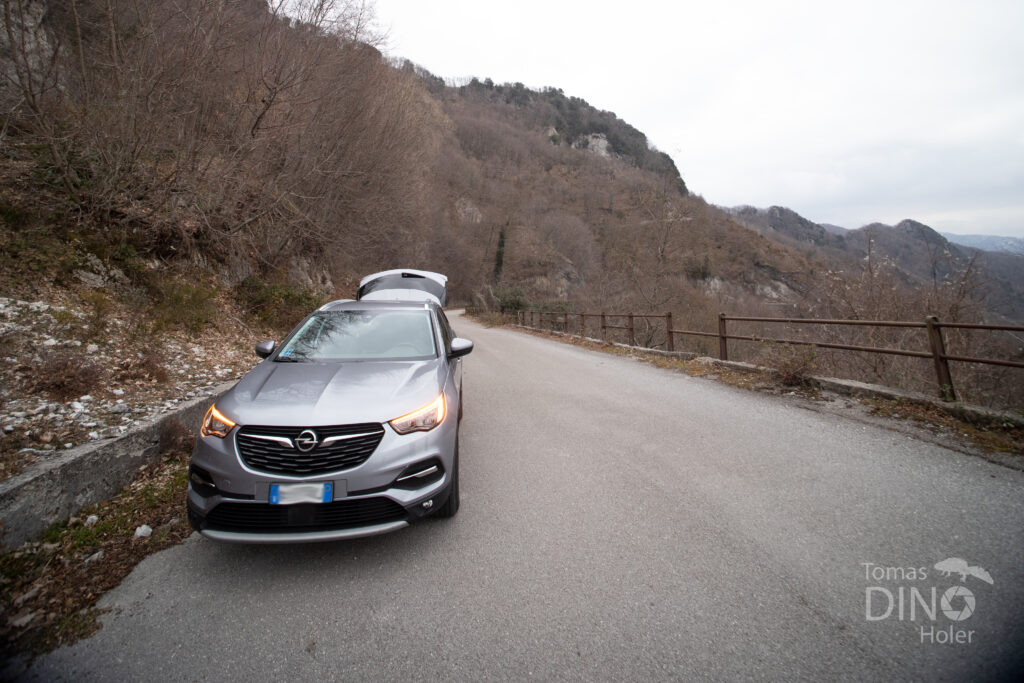
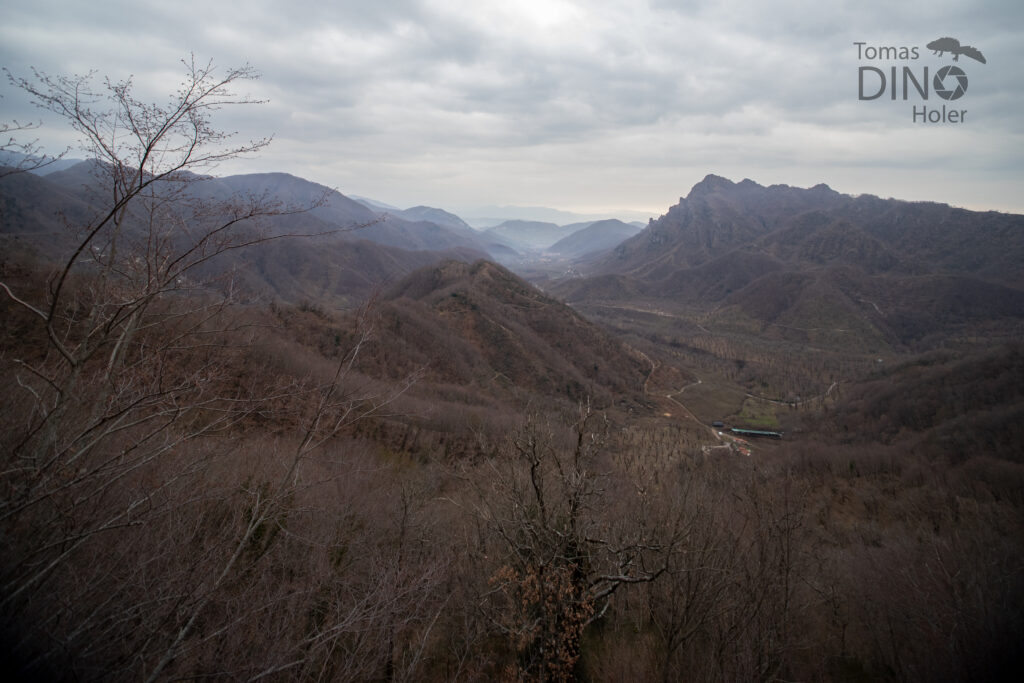
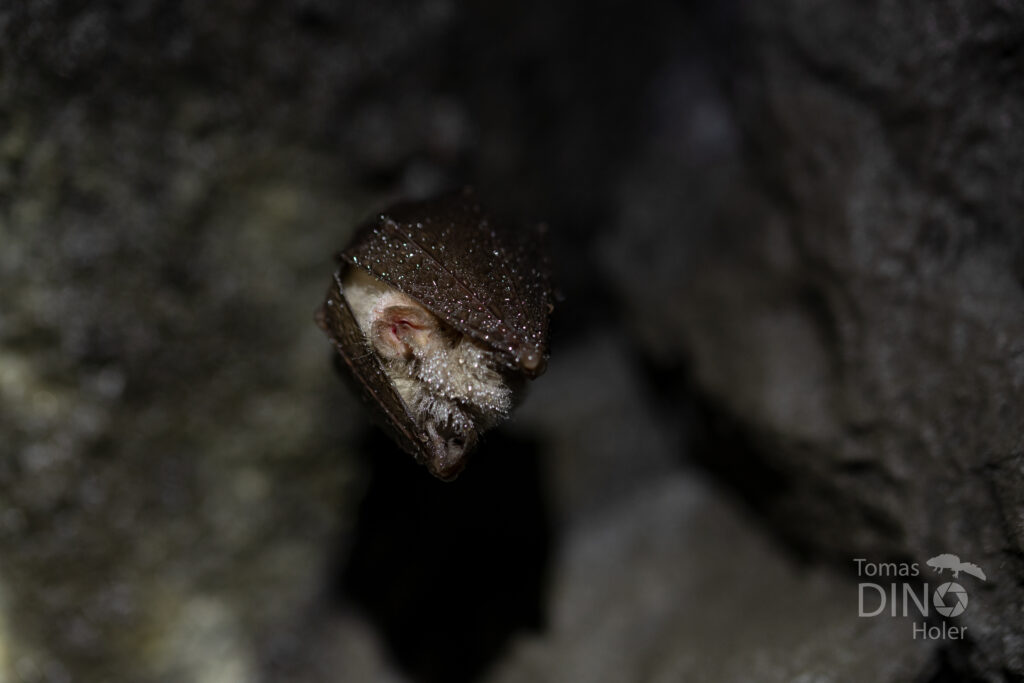
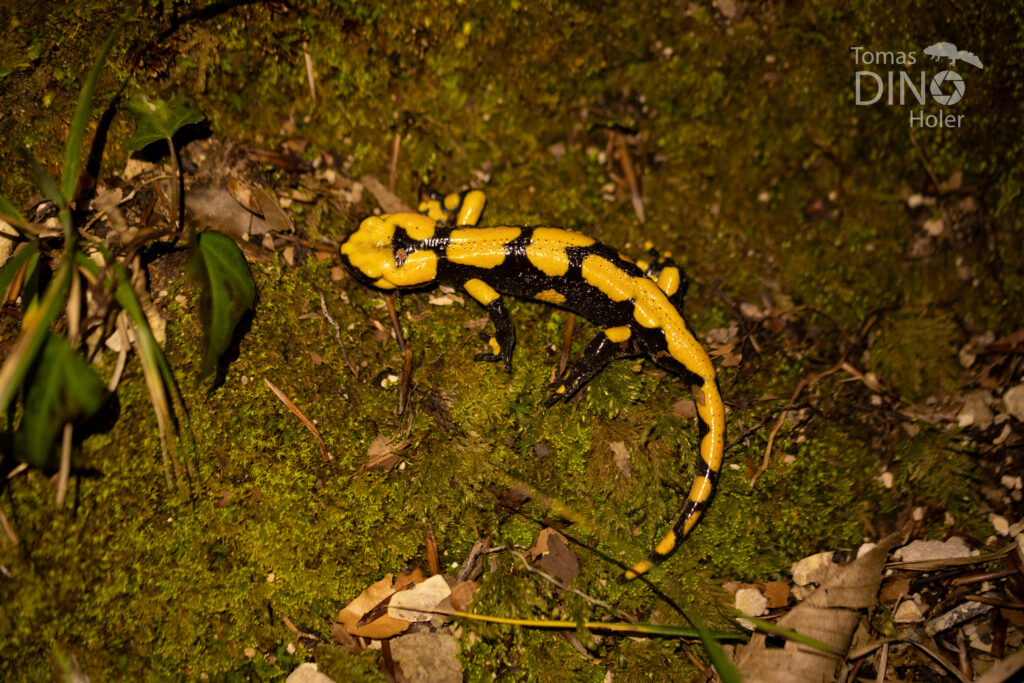
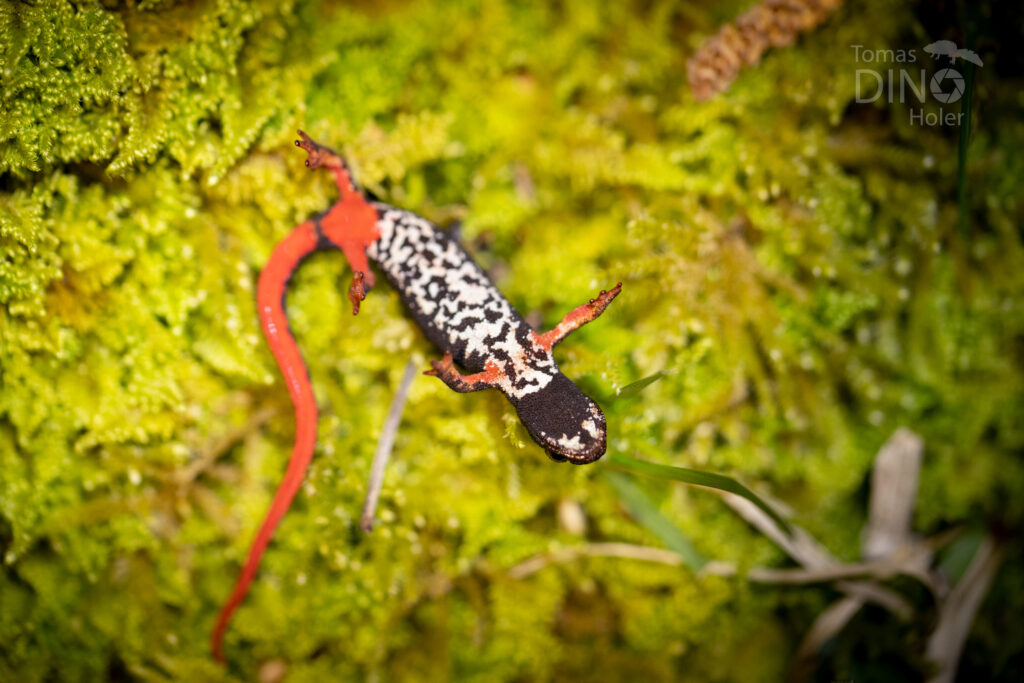
On the third morning we searched for reptiles in the area. We came across only the previously observed Italian wall lizards (Podarcis siculus) and also a subspecies of the Common wall lizard (Podarcis muralis breviceps). In the afternoon we moved north from Naples to the town of Mondragone. One of the southernmost localities of the Northern spectacled salamander (Salamandrina perspicillata) was supposed to be located here. After the accommodation we went to the locality. It was getting dark and local farmers had warned us not to go to the mountains, that there was a “lupo”. We understood that he probably meant a wolf, according to its scientific name “Canis lupus”. We ignored the warning and went on. We have met the first salamandrina in a completely unexpected place – on a dry road in the middle of a grassy area. In the end, however, it turned out that there was water in the nearby scarp. However, we did not see any movement there, so we continued further into the valley of the stream. We almost stepped on another salamander right on the ford on the hiking trail. This time it was a pregnant female who might be about to lay eggs in the water. Salamanders multiply on land and only females climb into the water when laying eggs. So we left the expectant mother alone and found several other individuals on a nearby rock, including other pregnant females. In two lakes further up the hill, we expected the occurrence of at least one species of newt. We stood by the lake for a few minutes, listening to howls in the distance and watching the surface. However, no newt came close to the surface for a breath. We saw only a few Pelophylax and we heard vocalizing common toads (Bufo bufo) males. We were also interested in the huge brine shrimp (Chirocephalus sp.). On the way back, to our surprise, we found several porcupine spikes (Hystrix cristata). This peculiar mammal is said to be quite common in southern Italy.
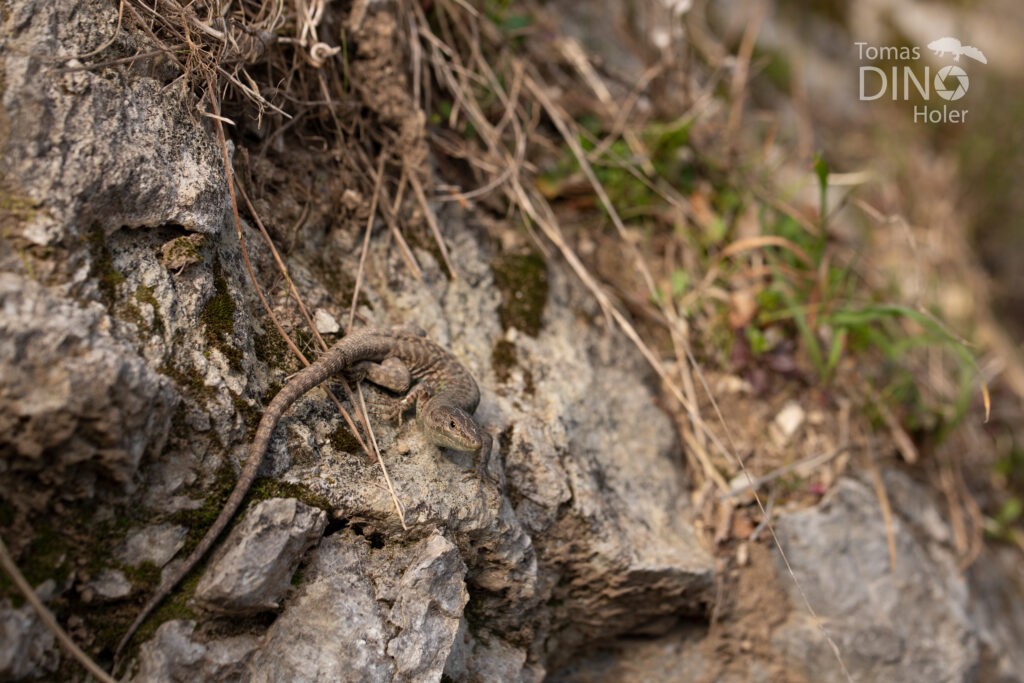
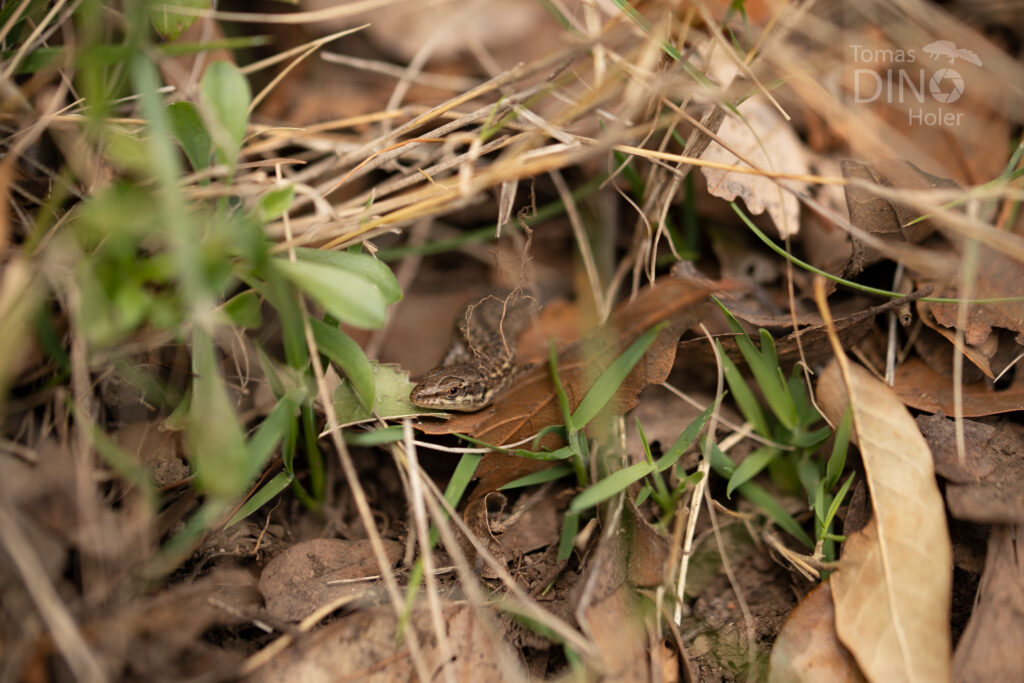
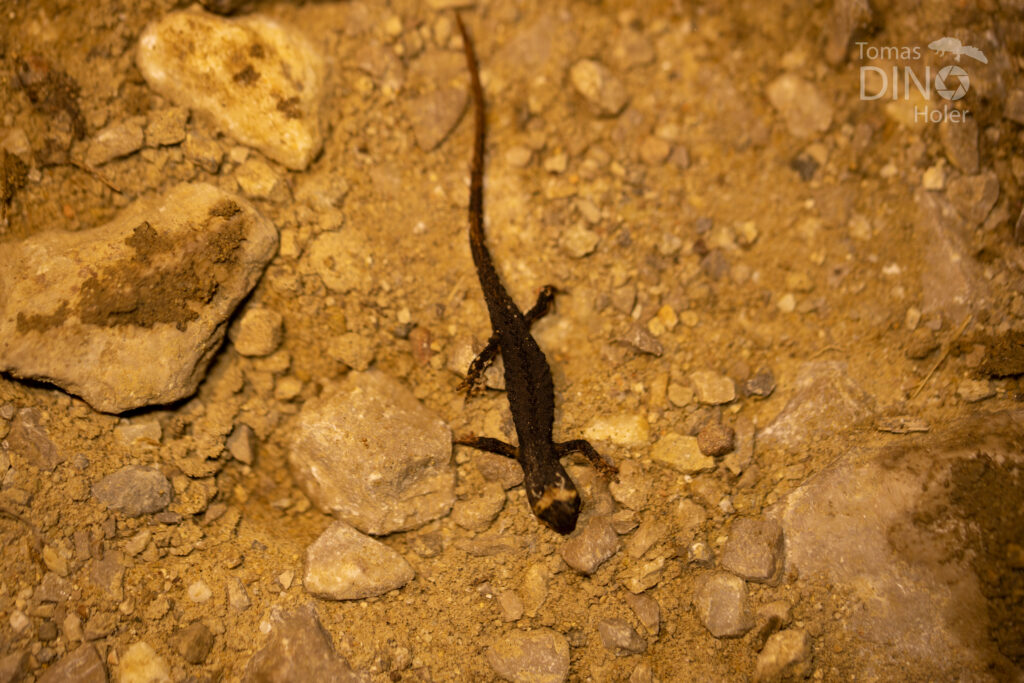
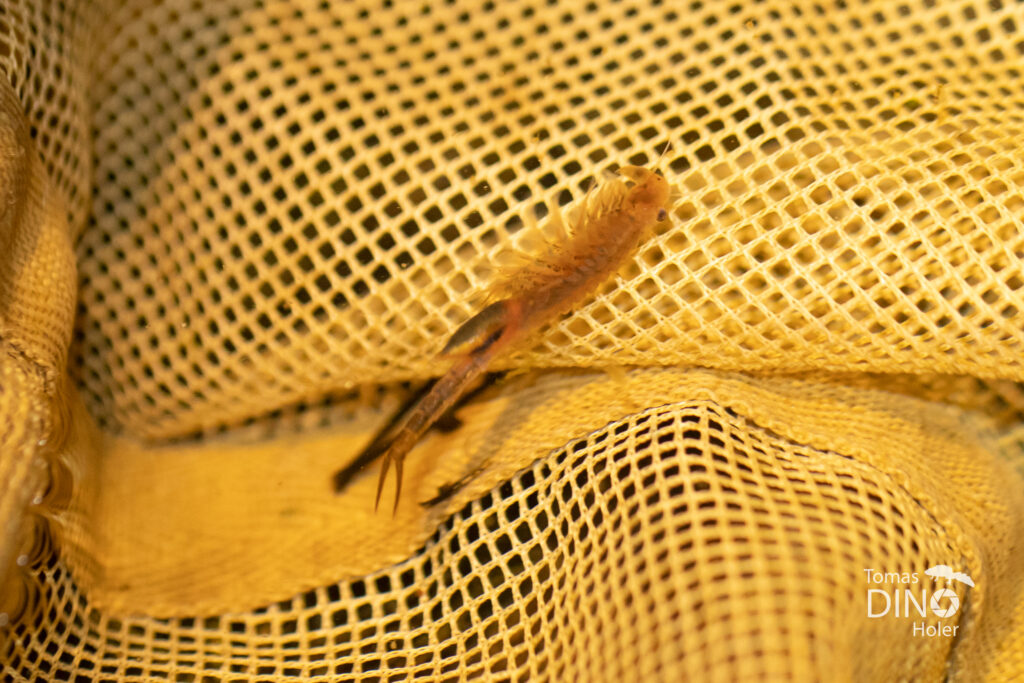
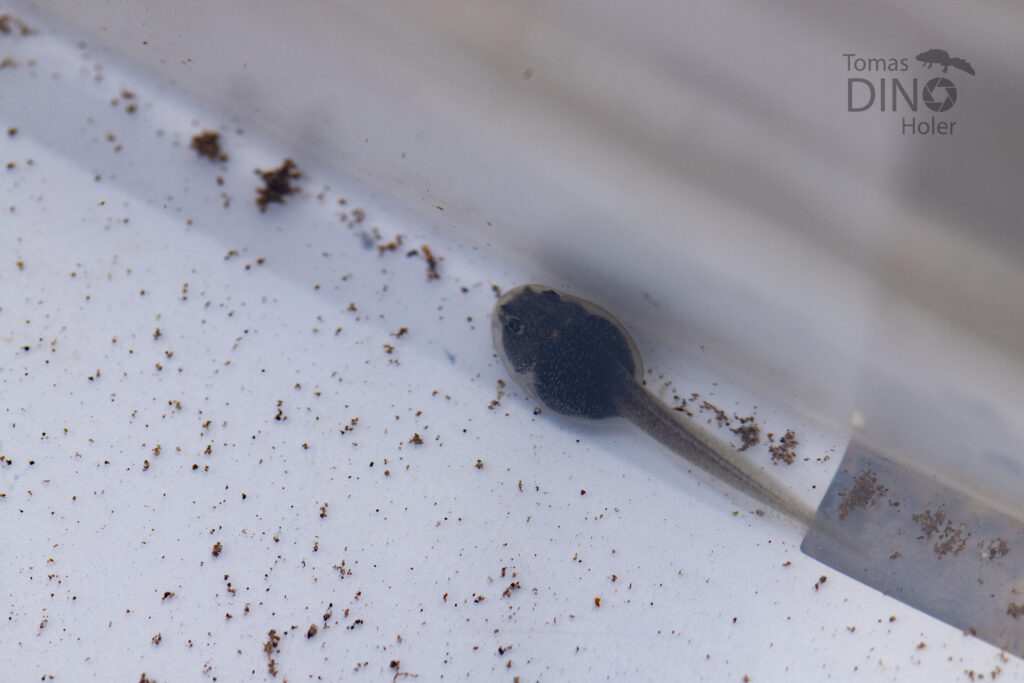
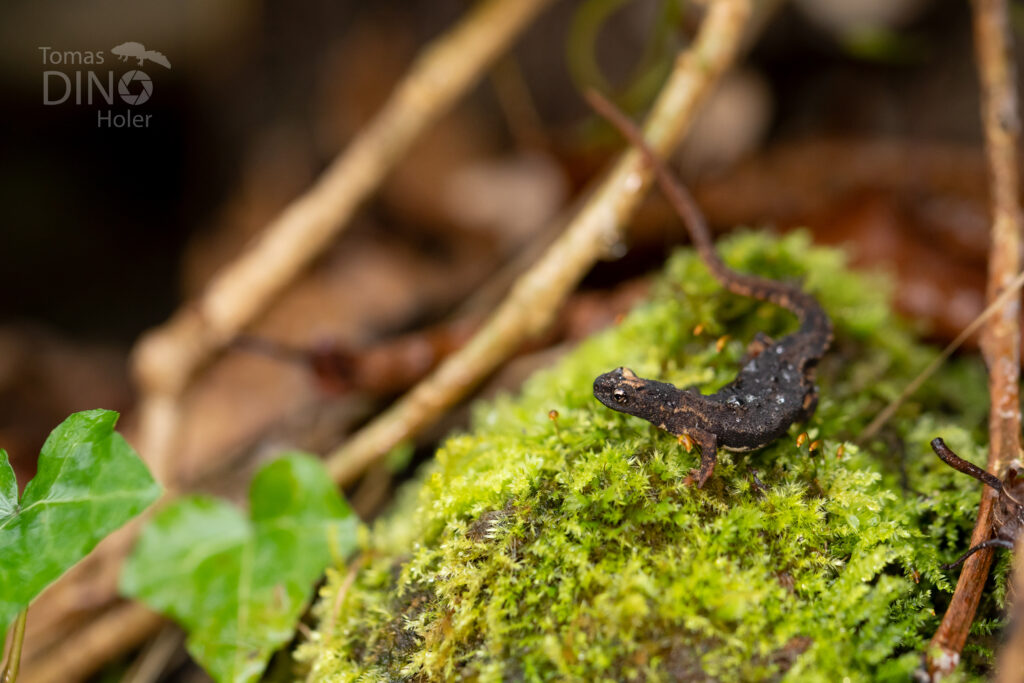
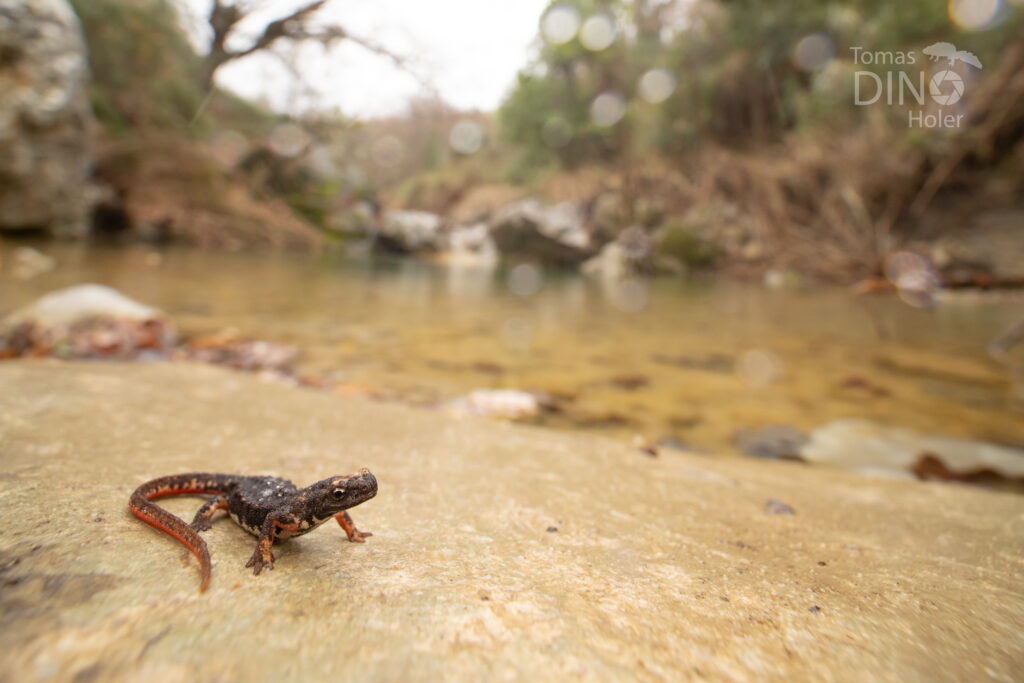
The next day we tried our luck with the newts a little further north. Dangerously looking serpentines led us to an altitude of about 850 m.n.m. Using Google maps, we have found potentially suitable water areas here. They were actually old stone wells with a diameter of about 5 m. As we approached the point in the GPS, we even came across a sign that presented the occurrence of three species of newts. As we peered over the edge of the well, we saw a view of dozens of newt bodies. We had a better overview only after dark, when the silhouettes of large newts (Triturus carnifex) and smaller, endemic newts (Lissotriton italicus) could be seen in relatively deep water. Some individuals of both species were even paedomorphic, fully colored adults with outer gills. The third species here, according to the educational sign, was to be the newt (Lissotriton vulgaris), which we did not observe in any of the reservoirs.

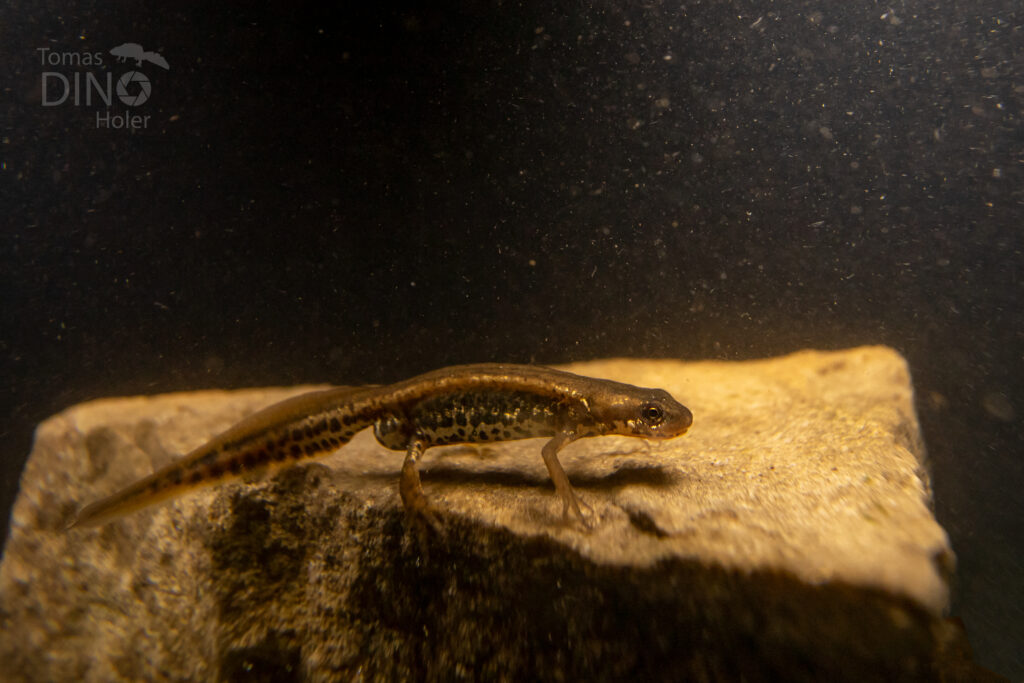
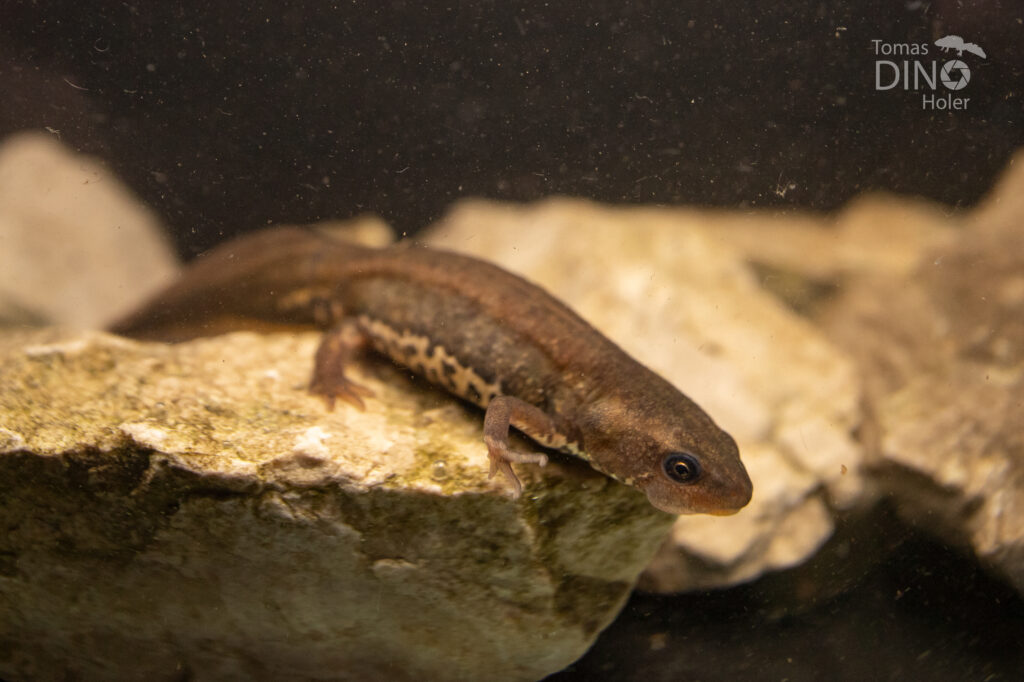
The expedition to the southern Italy exceeded our expectations. We found in abundant numbers all the species we wanted to see. The last day was clear and sunny, so we decided to dedicate it to reptiles. We chose a locality a little more inland, where the spotted viper (Vipera aspis francisciredi) was to be found. We have seen countless Italian lizards and several wall lizards of the subspecies nigriventris. But not any sights of the viper. Only once did I see the snake´s rapidly disappearing body in the stone wall. But I’ll never know what species it was.
On behalf of our team,
Tomáš Dino Holer
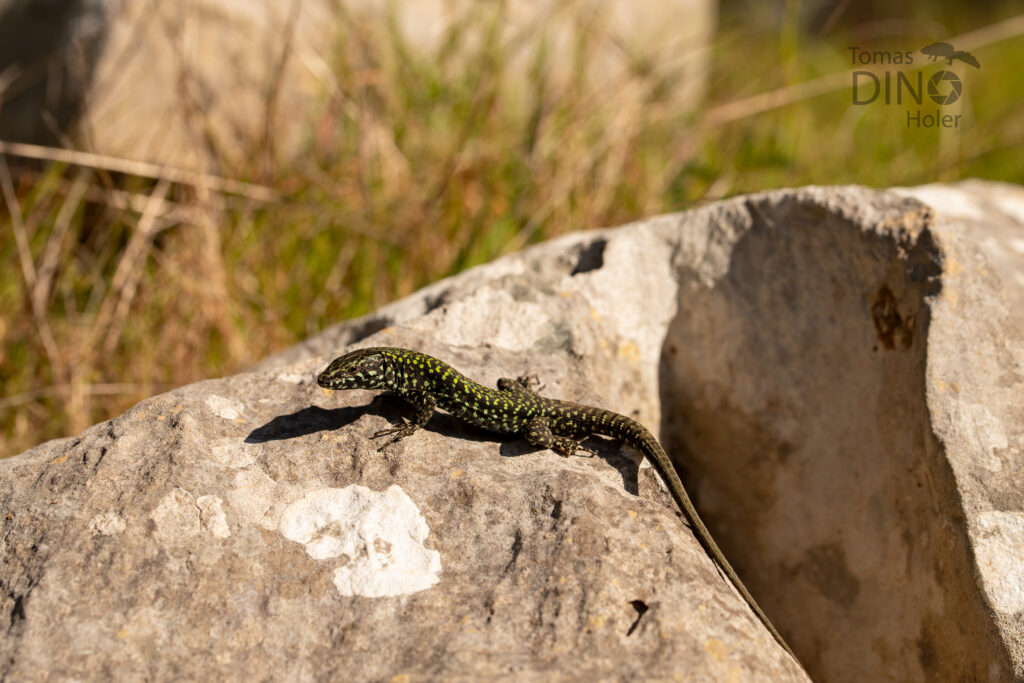
List of species:
Amphibians (Amphibia) – 8 species:
Frogs and Toads (Anura) – 3 species:
Pelophylax sp.
Rana italica
Bufo bufo
Tailed amphibians (Caudata) – 5 species:
Lissotriton italicus
Triturus carnifex
Salamandra salamandra giglioli
Salamandrina terdigitata
Salamandrina perspicillata
Reptiles (Reptilia) – 4 taxa:
Lacertidae
Podarcis muralis breviceps
Podarcis muralis nigriventris
Podarcis siculus siculus
Gekkonidae
Tarentola mauritanica
